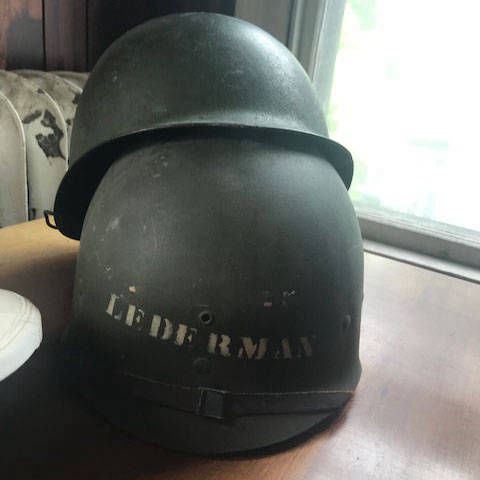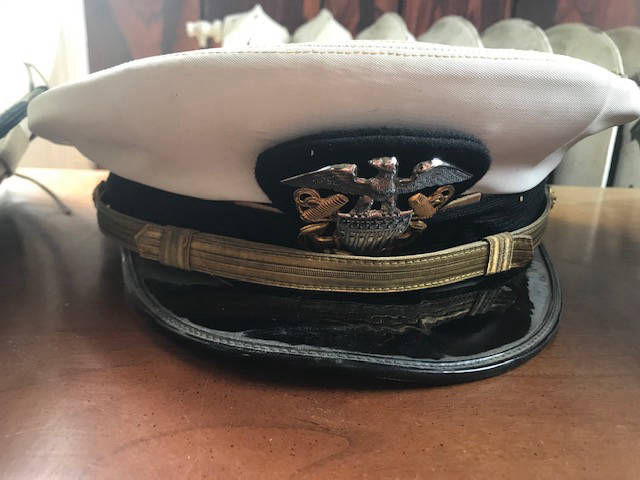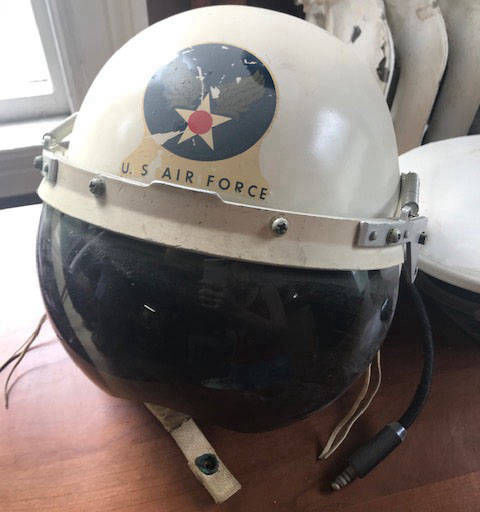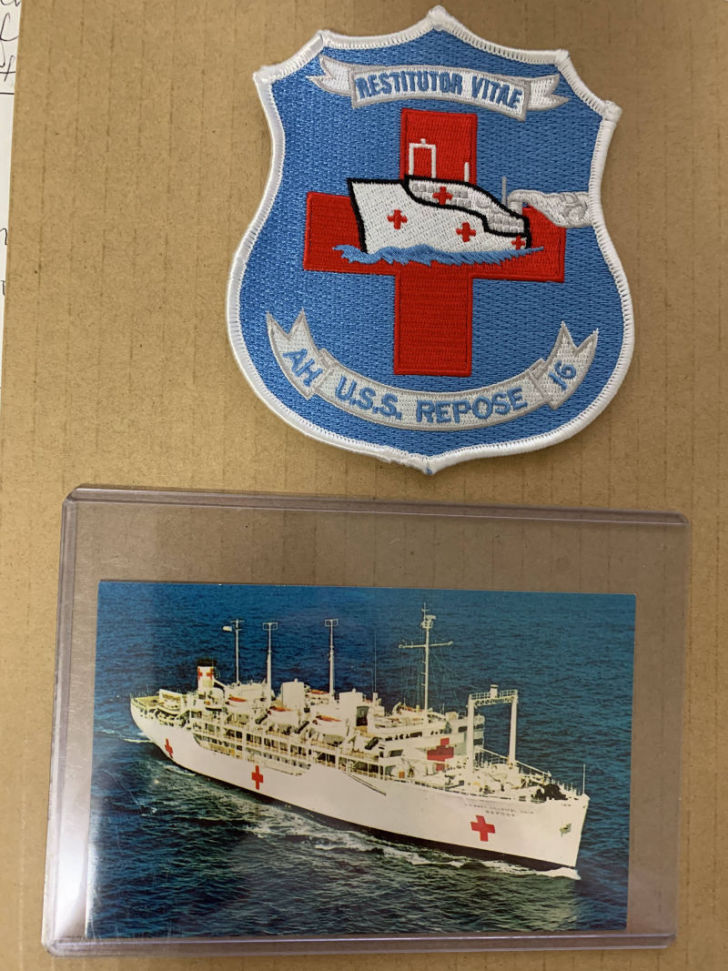



"I've had a real bloodbath and am heart sick with too long and too intimate an association with broken bodies, obliterated faces, destroyed minds, I always thought I knew compassion, but this quality has grown even more these past months."
-CMDR Mel Lederman-
Melvin Lederman was among the 70 percent of servicemen killed during the Vietnam War who had voluntarily joined, having fulfilled his service requirement as a military policeman during World War II. But he belonged to a much rarer, almost exclusive, group of enlistees. He was a decorated doctor and cardiothoracic surgeon at Massachusetts General Hospital whose accomplishments are as numerous as they are astonishing, each meriting attention in and of themselves.
In the intervening years, between the time he was stationed in Alaska during World War II until the Navy commissioned him as a lieutenant commander, Mel had amassed a startling resume: several masters degrees from Yale (where he lectured in physics) and the University of Michigan, a medical doctorate from Harvard University (where he would later become a research fellow in surgery), numerous clinical fellowships, surgical residencies and instructorships. He was even invited to observe British surgical techniques at Westminster Hospital in London. Such was his regard in medical circles.
Those who knew Mel spoke of his irrepressible lust for life, his unwavering support of family and friends, and his astonishing array of interests in which he was passionately involved. He took up calligraphy to avoid a doctor's tendency to scribble, and he always brought a book of poems or a Conan Doyle novel to bed. Indeed... if there was anything left to be desired in any area of his life, Mel sprung into action, consuming books on subjects he wanted to know more about.
By 1968, Mel had been practicing surgery, and by all appearances, was at the height of his profession. He was offered a $500,000 salary for a surgical partnership in California. But as the conflict in Vietnam intensified that same year, and casualties mounted following the surprise North Vietnamese attacks known as the Tet Offensive, Mel opted to join the Navy. Explaining his decision, he told family and friends: "I don't want to practice medicine to make money. Our guys are getting killed over there. Somebody has to help them."
His application to the Navy, written in pristine chancery cursive, detailed his extensive scholarships, awards, hobbies and interests. He was commissioned a lieutenant commander and volunteered to go to Vietnam, serving on a hospital ship stationed just off the war-torn country's coast called the USS Repose. While he awaited appointment, he completed paratrooper training, earning his "jump wings" in just 30 days. Within months of arriving in Vietnam, he was promoted to full commander.
As a surgeon, Mel was accustomed to seeing the insides of bodies. When the wounded were brought back to the ship, as he would describe in letters to longtime friend Lester Grant, too many had sustained injuries that were beyond repair, with many having bled out before arriving. He then decided to accompany the Marines on medical evacuation missions despite the captain's and medical officer's stern disapproval. He would work all day on the hospital ship, then fly rescue missions when he was off duty. He was frequently told that that such missions were dangerous to the point of suicidal.
"It sounds crazy, Lester, but I really enjoy all this sort of activity. When the bullets were coming up all around me through the floor of the helicopter I felt a strange sense of elation and excitement," Lederman wrote. "...but I must say I'm sickened by the constant dealing with the wounded and dying patients. The doing, however, the acting out of hostility and aggression, ah, that I enjoy. I admit it unshamefully. Is there something wrong with me?"
Attaching himself to HMM-364 — a squadron famously known as the Purple Foxes — Mel would go on to earn three Purple Hearts, though he never spoke of the incidents or the circumstances of the awards. He was also given the nickname "Super Doc," which was affixed to his Naval identification tab. (He earned the distinction of "Super Doc," which he wore along with the Medevac badge on his flight jacket).
Mel mentioned some of what had happened during those turbulent months in letters to friends and family, but the whole picture remains elusive. At one point, he had rescued a pilot and was recommended by the crew he flew with for an air medal, even though he was not on flight status. He would go on to earn seven such medals.
It was thought at various points that he accompanied the Navy SEALS on special missions. But as the fighting intensified so too did the concern expressed in his letters:
"I've had a real bloodbath and am heart sick with too long and too intimate an association with broken bodies, obliterated faces, destroyed minds," he wrote. "I always thought I knew compassion, but this quality has grown even more these past months."
On November 29, 1969, just two days before he was scheduled for discharge, Mel boarded a Medevac helicopter to recover a wounded marine in southern Quhng Nam Province. The Cobra chopper was hit by enemy fire and all seven servicemen on board, including Mel, were killed. He was 41 years old.
An initial investigation concluded that the crash was caused by mechanical failure rather than enemy combat. When the wreckage was brought back to Marble Mountain Air Facility five miles southeast of the Da Nang Air Base, examiners determined that a .50 caliber bullet had struck the synchronization shaft, bringing the helicopter down. The casualty reports for the five marines who perished were corrected to "killed in action", and Purple Hearts were awarded to them posthumously. But Mel's record, and that of Navy Corpsman James Garrett, for unknown reasons, were not changed.
Six months after his death, the Lederman family received an anonymous letter further detailing the surgeon's military exploits just days before he was killed. It said that Mel, along with two others, were recommended for Silver Stars — the military's third highest combat award — after they had risked their lives to save two army pilots, who ultimately perished in a helicopter crash over enemy territory.
According to the letter, after Mel's death, the award recommendation was dropped.
"I feel that your son and the other two men that were with him deserve this award," the letter reads. "I knew your son and I admired and respected him ... Maybe there is something that you can do to see that your son gets the award that he deserves."
Following Mel's death, the family approached John Winthrop Sears, then the Metropolitan District Commissioner — a precursor to the Massachusetts Department of Conservation and Recreation (DCR) — with ideas for a special memorial.
Due to the anti-war sentiment that swept the nation during and after the conflict, the family felt pressured to pursue a quiet memorial. In 1970, the Commonwealth of Massachusetts dedicated a park area from the Longfellow Bridge to the public tennis courts on the Esplanade in memory of Mel. It was named Lederman Field with a boulder inscribed "Mel Lederman" from the estate of Lester Grant.
For the next four decades, the family would live in the dark with painful questions as to what really happened to Super Doc.
In 2005, the Boston Red Sox had planned to rededicate Lederman Field to honor Teddy Ebersol, the 14-year-old son of NBC Sports executive Dick Ebersol and actress Susan St. James, who died in a plane crash the year prior. According to reports from the Boston Courant, the Lederman family was never notified by the involved parties. When family friend Lynne Young learned of the plans through the former Boston Courant, she showed it her to husband, Clifford, who was a friend of Mel's. Clifford had always lamented that a promised monument had never come to fruition. Young, Hoffman and the Lederman's would meet with the Red Sox, who graciously agreed to rename the field, becoming "Teddy Ebersol Red Sox Fields at Lederman Park." The rededication accompanied a near $2 million revitalization of the park space.
The family, with Hoffman and the Young's taking the lead, were determined to pursue plans for a proper memorial. They would go on to revisit the question of Mel's death, his record and the various awards he had been recommended for. A memorial committee was set up, chaired by Young, and Hoffman would coordinate a full explication of the events surrounding the fatal helicopter crash and the Silver Star recommendation with retired Marine Corps Major Franklin Gulledge, Jr.
Gulledge went to work piecing together testimony from surviving Marines who were involved in the Cobra rescue mission decades ago — the incident in which Mel was recommended for the Silver Star. Looking back on that November day, one of the men, Sgt. Bruce Federer, chief of the crew, recalls a perilous attempt to pull two pilots from a downed chopper. Then 18-years-old, it was Federer's first combat experience. After retrieving the fatally mounded pilots, Federer recalled his encounter with Mel.
"I was sitting in the crew chief chair on my 46. [Commander] Lederman approached me at this time and we started talking," Federer said. "I was feeling like all I wanted to do was disappear, just leave. He said, 'Son, once the soul has left the body, all that's there is just meat. It's just a body, and the soul has gone to God.' He talked to me for a long time. If he hadn't talked to me, I probably would have left the flight line or something. I was very, very distraught at the time, and he took the time to talk to me ... I have never forgotten it; he brought me back to sanity, quite honestly."
According to the Virtual Wall, a website dedicated to the memory of those who fought in Vietnam, Mel was listed as a psychologist who "flew with the combat aircrews in order to gain a better understanding of the stresses they endured so that he could better serve them."
"While Commander Lederman did not in fact receive a Purple Heart, he should have," the website reads. "And The Virtual Wall is displaying what he should have received."
Last May, 47 years after his brother's death, Marty received the long-overdue fourth Purple Heart on Mel's behalf at a Brookline Town Hall ceremony. After several years of filing for a record correction with the U.S Navy and getting the runaround, the family turned to Bill McGroarty, director of Brookline Veteran Services. McGroarty contacted the office of Congressman Joe Kennedy III, and within six months, the Purple Heart was awarded and Mel's record was corrected.
"My guess is that they didn't want to glorify a doctor who put his own life on the line," said McGroarty, when asked to speculate on why it took 47 years to correct the record. "After the [USS Repose] returned to Bremerton, Washington from Southeast Asia, the family received an anonymous letter about the Silver Star. [The anonymity] tells me that whoever sent the letter didn't want the command to have an opportunity to read it. So there was probably a lot of politics involved."
McGroarty contacted Federer, who now resides in Georgia, for an interview. In listening to Federer recount the gruesome rescue mission and the conversation with Mel that followed, McGroarty added that on that day, "It wasn't an officer talking to a Marine, it wasn't a doctor talking to a wounded soldier, I believe it was a father talking to a son."
"The fact the two Navy personnel on board didn't receive recognition for their sacrifice is an injustice," he continued. "And the fact that it has taken this long to rectify the wrong is a travesty."
Ongoing memorial efforts ran into numerous obstacles in getting the permits and approvals necessary from various entities — the city, DCR, and the Esplanade Association — to create the monument.
And the plans continued to stall. Gulledge and John Sears have both since passed away, and DCR executive and administrative turnover has put the project further in question. But family and friends have found a sculptor through Steven Cecil of the Cecil Group, David Phillips, who has conceived a laudable design for the monument. Ruth Helfeld, who helms DCR's landscape architecture, oversees the project. The family is looking to raise upwards of $400,000 to see it become a reality.
After years of bureaucratic pushback, the project went before the Boston Landmarks Commission on Tuesday, October 25. It was passed, according to a Landmarks spokesperson, with a couple of provisos and will have to go before the commission again.
The Esplanade Association also approved the plan and agreed to be the fiscal sponsors working closely with the DCR and the Lederman Committee.
This year will mark the fifteenth year since memorial efforts began. Congressman Kennedy's office is working to obtain the elusive Silver Star.
"A person is still very much alive when they are kept in our hearts and minds," said Young. "We want people to remember him."
"We go on because we must, all of us do our best for the living."
CMDR Mel Lederman-July 21, 1969
Article by Tanner Stening




Click to learn how to donate to the Dr. Lederman, CMDR USN Memorial